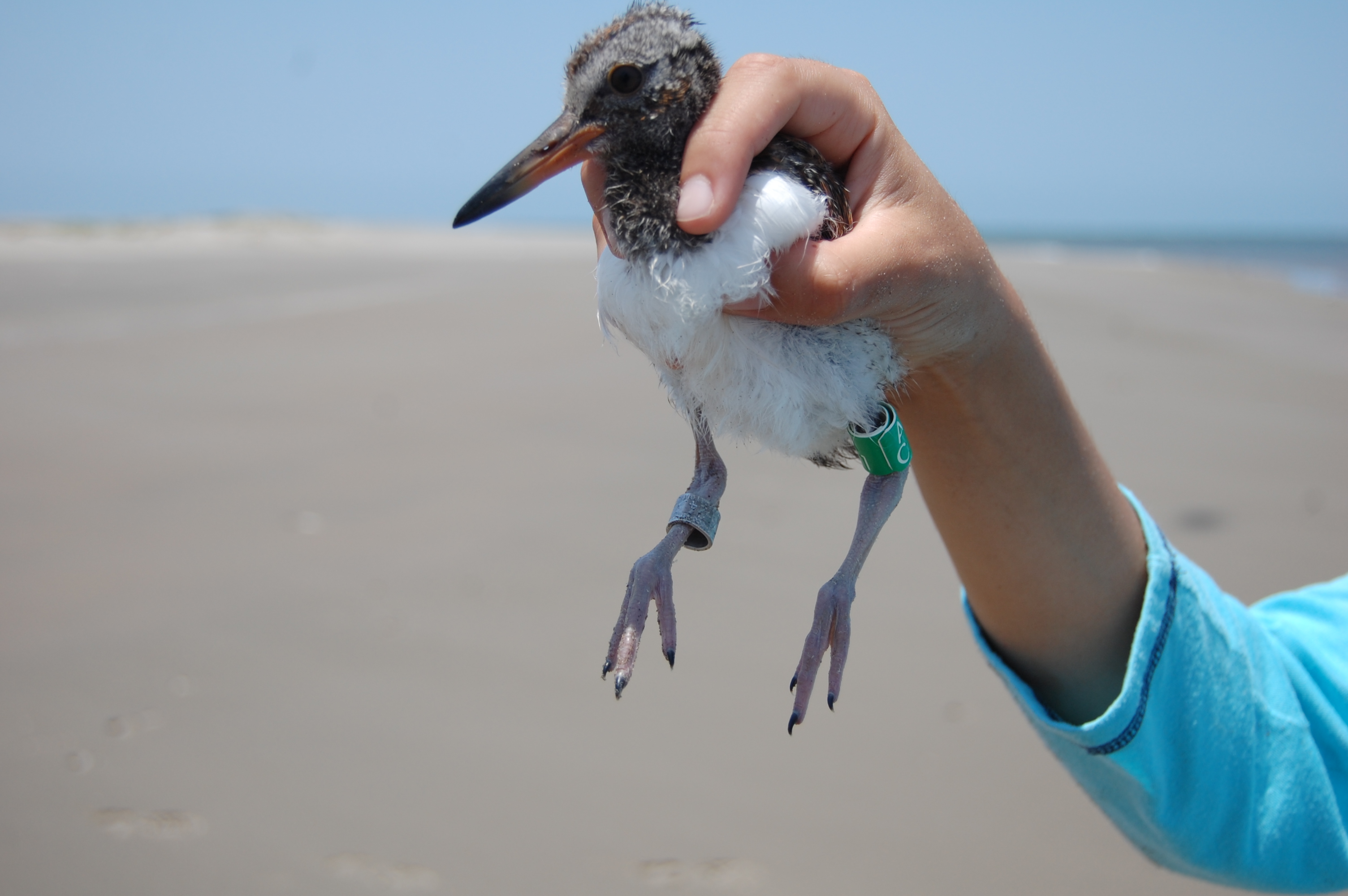
AMOY Research & Monitoring in Northwest Mexico
The Pacific American Oystercatcher (Haematopus palliatus frazari) is a resident shorebird on both coasts of the Baja California peninsula and the west coast of Mexico. H. p. frazari has been recognized as a subspecies since 1888 (Jehl, Jr. 1985), and is discernible from other races by being the largest in size, having little or no white in outer primaries, and being generally darker above with a mottled breast (Jehl, Jr. 1985, Clay et al. 2014). Its population trends and conservation problems are poorly known. Recent information indicates extremely low numbers and a discrete distribution limited to northwest Mexico. The American Oystercatcher is a priority species in the Shorebird Conservation Plans of the US and Mexico. Because of loss and degradation of habitat by coastal development, disturbance from human recreational activities, and hybridization with the Black Oystercatcher (H. bachmani), the Pacific American Oystercatcher is federally listed as endangered in Mexico since 2010.
Breeding Surveys
The breeding range of the Pacific American Oystercatcher extends along the coasts of northwest Mexico including the states of Baja California, Baja California Sur, Sonora, Sinaloa, and Nayarit. South of Nayarit the Pacific American Oystercatcher is uncommon. Between 2007 and 2009, breeding surveys were conducted along the west coast of Mexico and its population was estimated as roughly 2,500 adults. Its distribution was more restricted than expected, with 80% of oystercatchers in two states; Sinaloa and Baja California Sur. Since 2013, annual breeding surveys in several sites in Northwest Mexico (Bahía de La Paz, Bahía de Loreto, Bahía Santa María, and the Colorado River Delta) have been conducted. In Sonora, annual breeding observations and basic productivity estimates have been conducted since 2012 on Isla Alcatraz off of the town of Bahía de Kino, and in five estuaries along the Hermosillo Coast (Estero Cardonal, Estero Tastiota, Estero Santa Cruz, and Estero Santa Rosa). Numbers are much lower than the other states, with approximately 20-30 breeding pairs.
Non-breeding Surveys
Statewide surveys in Sinaloa for Pacific American Oystercatchers were conducted in 2014. A maximum of 1,351 adults was estimated to use this area, using maximum count per site standardized to high tide. Flocks were of variable size (3-253). Oystercatchers were mainly found in sand, rocky and mangrove islands, mudflats, and sand beaches. Out of six bays surveyed in Sinaloa (Bahía de Lechuguilla, Bahía de Topolobampo, Bahía de Navachiste, Bahía Santa María, Bahía de Ceuta, and Bahía de Mazatlán). Bahia Santa Maria had the largest numbers. During the non-breeding season, Sinaloa population comprises approximately 45% of the total population estimate (1,351 out of 3,000 adult). In Sonora, the Pacific American Oystercatcher is surveyed by waterbird censuses conducted year-round and occurs in low numbers. It winters in estuaries in flocks ranging from 100-200 individuals. We anticipate continuing surveys annually to help track non-breeding population trends.
Banding
We began banding young in 2013. To date, 18 chicks have been banded of which 7 have been re-sighted. We anticipate continuing with these efforts in order to gain a better understanding of movements and important demographic parameters such as recruitment, juvenile and sub-adult survival.
Northwest Mexico Banding Scheme
2013-present: Green bands with white triangle-code (three white engraved horizontally-oriented letters with one character above two characters) on upper left leg; single metal band on right lower leg.
Northwest Mexico Contacts
- Eduardo Palacios – CICESE, Unidad La Paz (Coordinator)
- José Alfredo Castillo Guerrero – CIAD, Unidad Mazatlán
- Guillermo Fernández – UNAM, Unidad Mazatlán
- Miriam Lerma – Independent Researcher
- Cecilia García Chávelas – APFF-IGC, CONANP
- Miguel Ángel Guevara Medina – APFF-IGC, CONANP
- Eduardo Soto Montoya – RB-AGCDRC, CONANP
- Emily Clark – Kino Bay Center for Cultural and Ecological Studies, Bahía Kino, Sonora


